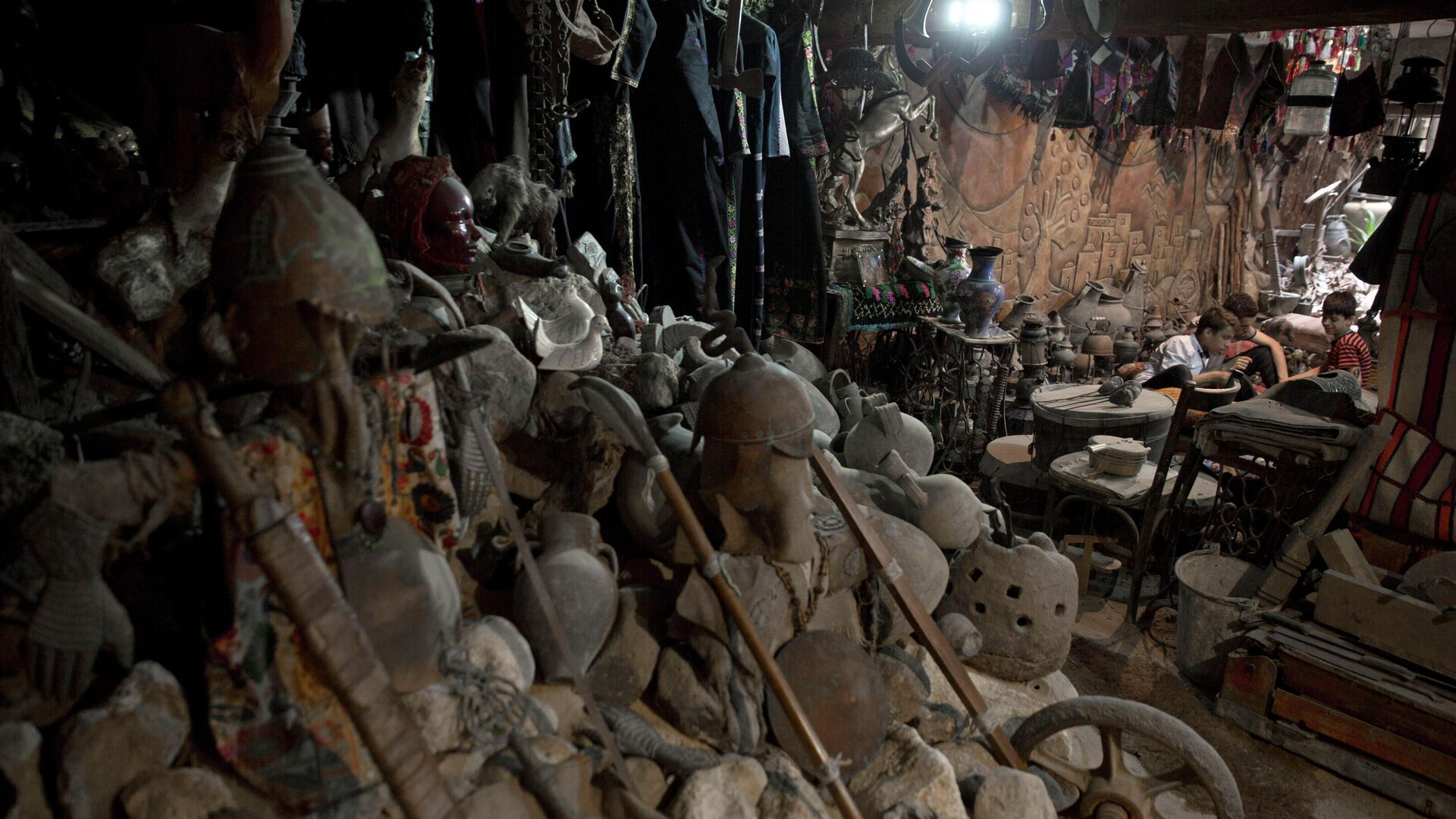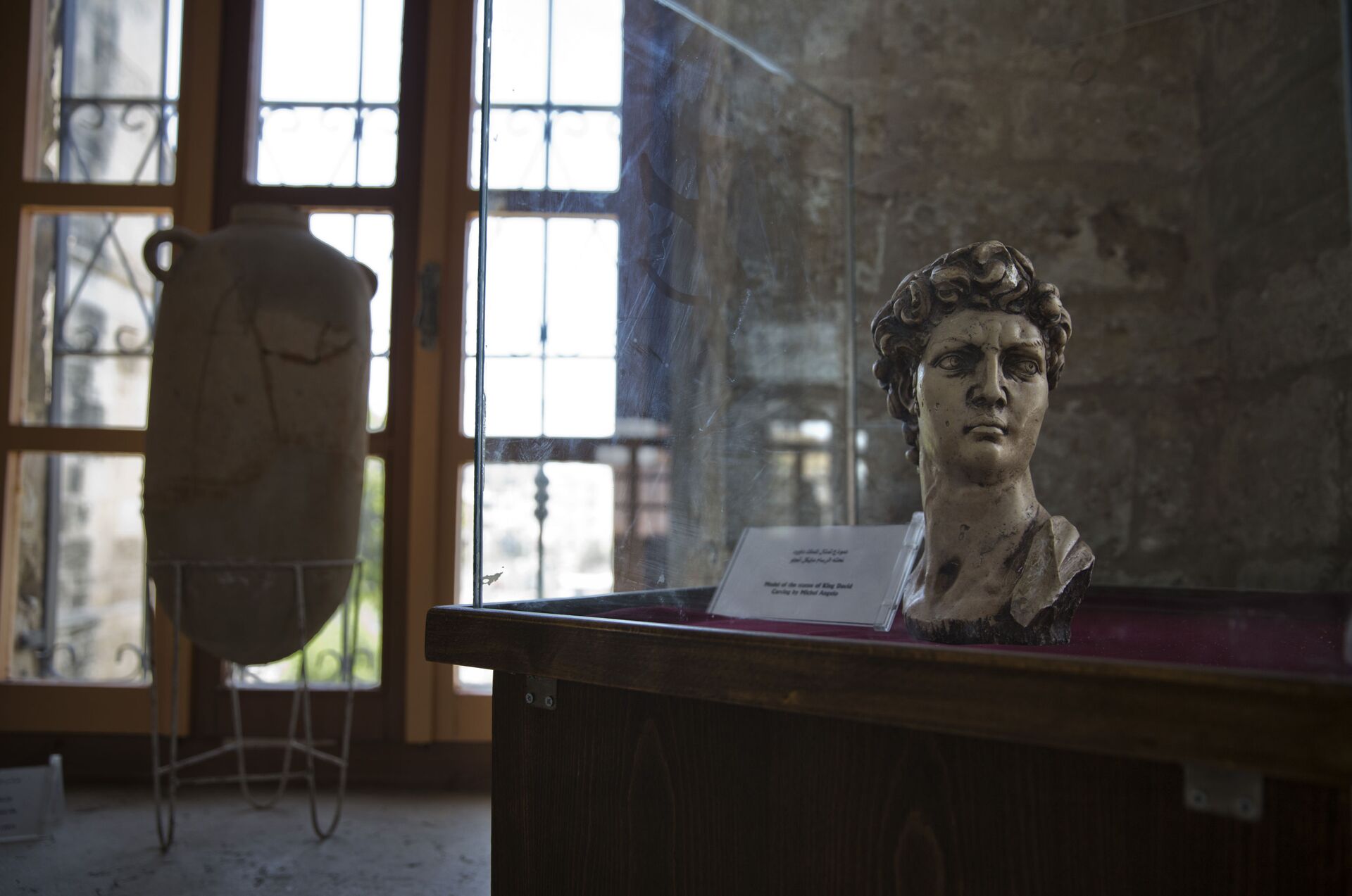https://sputnikglobe.com/20220711/gaza-lacks-resources-to-handle-its-historical-heritage-says-archaeologist---1097185174.html
Gaza Lacks Resources to Handle Its Historical Heritage, Says Archaeologist
Gaza Lacks Resources to Handle Its Historical Heritage, Says Archaeologist
Sputnik International
According to some estimates, the Palestinian territories are home to more than 12,000 archaeological sites; nearly 200 of them are in the Gaza Strip. However... 11.07.2022, Sputnik International
2022-07-11T11:19+0000
2022-07-11T11:19+0000
2023-12-05T09:22+0000
middle east
palestinians
archaeology
israel
gaza strip
https://cdn1.img.sputnikglobe.com/img/07e6/07/0b/1097184953_0:0:3212:1807_1920x0_80_0_0_96bd542a2045d445a3e7b53f3b09567c.jpg
In the end of June, the Hamas-run Ministry of Tourism and Antiquities in the Gaza Strip released its first official archeological guide, featuring 39 sites dispersed throughout the territory.The guide features churches, mosques and monasteries as well as shrines and palaces that were built in the Gaza Strip under the Ayyubic, Mamluk and Ottoman civilizations. And Moen Al-Sadiq, a Gaza-based archeologist, says the area has plenty of gems to offer visitors.According to the Institute for Palestine Studies, there are more than 12,000 archeological sites in the Palestinian territories; about 200 are in the Gaza Strip. Many others are probably located under the surface but spotting them might be a ‘mission impossible’.Pure LuckAl-Sadiq says that the Hamas government doesn't have the funds to help with the excavation process. As a result, most of the work is done by individuals, who encounter artifacts by "pure chance.”Only recently, a Palestinian citizen found large archeological stones believed to be part of the largest cemetery in the Gaza Strip. Another resident of the coastal enclave unearthed a statue of a Canaanite goddess, Anat, while cultivating his land.After these treasures are uncovered, Hamas typically takes them away and stores them in its Al Basha Palace museum, a place that has become a popular destination among locals and occasional tourists, who arrive at Gaza.History for SaleBut the fate of many artifacts is not that bright, says the archeologist.This conduct of his fellow Gazans pains Al-Sadiq, but he says he understands where this approach is coming from. Since 2007, when Hamas took control of the Strip, the enclave has suffered under a strict Israeli blockade. As a result, thousands of Gazans have lost their jobs. Unemployment cycles have widened, and the poverty rate has worsened. Many have turned to the donations of international donors and various NGOs in order to make ends meet. This is why selling artifacts seems like a natural choice for many who are struggling to put food on the table.However, the smuggling of artifacts is not the only thing threatening Gaza's archaeological heritage. It also faces the expansion needs of local residents.Over the years, the population of the Gaza Strip has increased significantly. Today the 365 square kilometer strip is home to 2.3 million, but with an average growth rate of three percent per year, the enclave stands to become even more crowded. For comparison’s sake, the city of Brussels is 712 square meters and home to just over two million people. The practical meaning of this is that the local authorities will need to find plots for housing. Areas that contain artifacts will not be an exception.Al-Sadiq says Gaza has a dedicated law that aims at protecting its archeological treasures. In reality, however, not many adhere by the legislation, and the reason for this is the lack of public's awareness.
israel
gaza strip
Sputnik International
feedback@sputniknews.com
+74956456601
MIA „Rosiya Segodnya“
2022
News
en_EN
Sputnik International
feedback@sputniknews.com
+74956456601
MIA „Rosiya Segodnya“
Sputnik International
feedback@sputniknews.com
+74956456601
MIA „Rosiya Segodnya“
middle east, palestinians, archaeology, israel, gaza strip
middle east, palestinians, archaeology, israel, gaza strip
Gaza Lacks Resources to Handle Its Historical Heritage, Says Archaeologist
11:19 GMT 11.07.2022 (Updated: 09:22 GMT 05.12.2023) According to some estimates, the Palestinian territories are home to more than 12,000 archaeological sites; nearly 200 of them are in the Gaza Strip. However, Hamas, which controls the enclave, doesn't have the means to excavate them and many antiquities have been destroyed or smuggled abroad.
In the end of June, the Hamas-run Ministry of Tourism and Antiquities in the Gaza Strip released its first official archeological guide, featuring 39 sites dispersed throughout the territory.
The guide features churches, mosques and monasteries as well as shrines and palaces that were built in the Gaza Strip under the Ayyubic, Mamluk and Ottoman civilizations. And Moen Al-Sadiq, a Gaza-based archeologist, says the
area has plenty of gems to offer visitors.
"Gaza is one of the oldest places in the area. Arab merchants used to pass through it for trade. Many empires build their palaces and buildings here as an indication that it was an important destination for them," he said.
According to the Institute for Palestine Studies, there are more than
12,000 archeological sites in the Palestinian territories; about 200 are in the Gaza Strip. Many others are probably located under the surface but spotting them might be a ‘mission impossible’.
Al-Sadiq says that the Hamas government doesn't have the funds to help with the excavation process. As a result, most of the work is done by individuals, who encounter artifacts by "pure chance.”
Only recently, a Palestinian citizen found large archeological stones believed to be
part of the largest cemetery in the Gaza Strip. Another resident of the coastal enclave unearthed a
statue of a Canaanite goddess, Anat, while cultivating his land.
After these treasures are uncovered, Hamas typically takes them away and stores them in its Al Basha Palace museum, a place that has become a popular destination among locals and occasional tourists, who arrive at Gaza.
But the fate of many artifacts is not that bright, says the archeologist.
"Many Gazans who bump into artifacts tend to sell them to earn some money. Some even prefer to smuggle these items abroad because overseas the prices are much higher," he complained.
This conduct of his fellow Gazans pains Al-Sadiq, but he says he understands where this approach is coming from. Since 2007, when Hamas took control of the Strip, the enclave has suffered under a strict Israeli blockade. As a result, thousands of Gazans have lost their jobs. Unemployment cycles have widened, and the poverty rate has worsened. Many have turned to the donations of international donors and various NGOs in order to make ends meet. This is why selling artifacts seems like a natural choice for many who are struggling to put food on the table.
However, the smuggling of artifacts is not the only thing threatening Gaza's archaeological heritage. It also faces the expansion needs of local residents.
Over the years, the population of the Gaza Strip has increased significantly. Today the 365 square kilometer strip is home to 2.3 million, but with an average growth rate of three percent per year, the
enclave stands to become even more crowded. For comparison’s sake, the city of Brussels is 712 square meters and home to just over two million people. The practical meaning of this is that the local authorities will need to find plots for housing. Areas that contain artifacts will not be an exception.
"We have already seen how the government was forced to build residential units over some archeological sites due to the fact that Gaza lacks space to accommodate all of its residents," recalled Al-Sadiq. "Only the pressure of NGOs and individual campaigns have stopped them from carrying out this policy".
Al-Sadiq says Gaza has a dedicated law that aims at protecting its archeological treasures. In reality, however, not many adhere by the legislation, and the reason for this is the lack of public's awareness.
"This is manageable and can change," reassured Al-Sadiq. "All we need to do is to adopt a law that prevents everyone from attacking our archeological sites. And, second, we need to launch media campaigns to raise people's awareness about the necessity to protect these treasures. Where there's a will, there's a way.”





